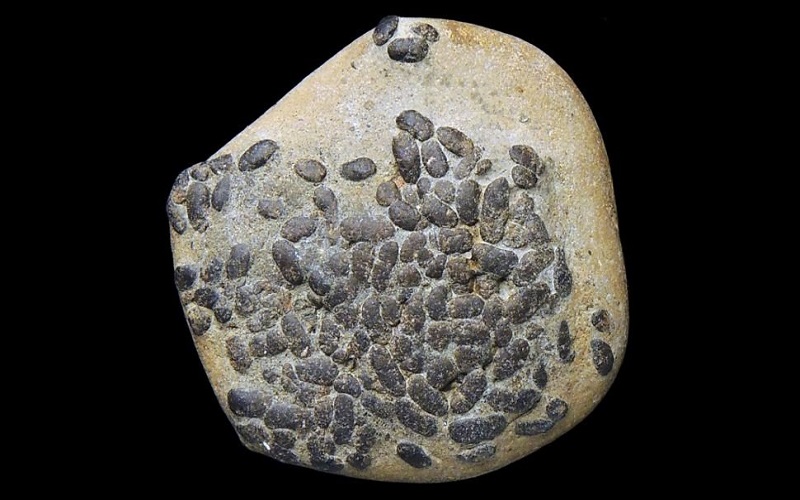A team of paleontologists describes the discovery of hundreds of tiny fossilized fecal pellets piled up in the skull of a dead fish around nine million years ago. These coprolites were deposited there by scavengers, probably worms.
About nine million years ago, in southern Maryland, small worms infiltrated the skull of a dead fish of the species Astroscopus countermani, lying on the seabed. As they feasted on its brains, these invertebrates released small, oval-shaped faeces, each measuring about 2.5mm in length. These have accumulated over time to eventually completely fill the cranial box. However, these small granules were recently the subject of a study published in the journal Rivista Italiana di Paleontologia e Stratigrafia (Research in Paleontology and Stratigraphy).
Although coprolites (fossilized droppings) of vertebrates have been described from these deposits, this is the first description of tiny invertebrate “fecal pellets” from this time.
Probably polychaete worms
These fossilized remains were found near the Calvert Cliffs. It is a site known for its many fossils that stretches from the southern Chesapeake Beach area in northern Calvert County to Drum Point in the southern end of the county. Three geological formations of Miocene age (about six to twenty million years old) are on display.
The researchers determined that these tiny pearls isolated inside the skull were fecal pellets “based on their very characteristic size, shape and chemical composition,” points out Stephen Godfrey, curator of paleontology at Calvert Marine. Solomons Museum.
In addition, based on analysis by non-destructive X-ray spectroscopy, these microcoproliths also displayed relatively high concentrations of calcium and phosphate. However, these are elements that are usually found in fossilized feces. As for the authors of these small faeces, the authors point out that this type of microgranules can be produced by insects, worms, Ascidians, snails and clams.
Here, fecal remains were found in the deepest parts of a fish skull that were no more than five centimeters wide. They were therefore probably deposited by invertebrates that could evolve in restricted spaces. Thus, according to the researchers, polychaete worms would make excellent culprits.
In addition to this feces-filled skull, the researchers also detail the discovery of another much larger coprolite measuring eight inches in length. According to them, it would be the work of a vertebrate, perhaps an ancient crocodilian.




